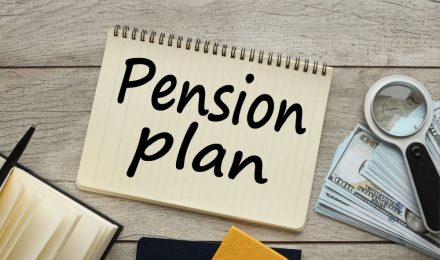As we get older and wiser we start to realize that our finances mean more than just a good time for now. They mean a stable future and some security when an unforeseen disaster happens. Our money, if invested and saved correctly, means that we can enjoy life and ride out any storm.
The reality is that everyone cannot work forever. Old age claims us all in the end. So what is the age to start planning for our future? What is the age to start thinking out the golden years? Are we ever too young to worry about if we will have enough money saved up when we hit retirement age?
The answers to the questions are very easily no. You are never too young to be concerned about your retirement savings. In fact the younger you are when you start to save the better off you’ll be. There are numerous options for saving money.
First, to save money you have to spend money. This means that you have to get out of debt. You cannot live out your retirement with bad or good debt hanging over your head. So, at any age, while you are still younger than the older you will be you need to take the time and effort to pay off your bad debt if you have it. If you do not have bad debt then that is great you are already a step ahead than most people. But, by paying off your bad debt you will be improving your credit score and your self-esteem. Always start from the lowest amounts that you owe to the highest amounts that you owe. I always say that you know your budget best, so I don’t set a certain percentage. But I wouldn’t pay more than I am spending on housing paying down my debt a month. It is important to still have a little money to enjoy the little things here and there, but when you have bad debt it is also important to realize that you can’t afford it at the moment also. But after the debt is gone you will have the extra money to place into a retirement account.
Speaking of retirement accounts, the main ones are a 401k and IRA. They both come in the Roth option but for now, I will just discuss what each one means. A 401K retirement savings plan means that a set savings amount is deducted from your check each pay period and that the employer matches the contribution. This plan is a retention incentive and the employee gets a huge retirement payout from the company in the long run. The amount is normally taxable upon withdrawing.
The Roth 401K is an employer match savings account that is contributed to after taxes are deducted. It is deducted from the employee’s paycheck like a regular 401K would be. The intent of this type of savings account is for those who feel that they would be in a higher tax bracket later in when they are of retirement age. A person can contribute up to nineteen thousand to a Roth 401K if they are forty-nine and younger. If they are fifty or older then they can contribute up to twenty-five thousand dollars to their Roth 401K account. Payments from this account are not normally taxed as long as they meet the normal guidelines. The normal guidelines are that you meet the age requirements to receive the payments and that the business that you work has at least five percent sponsorship in the plan. You have to be at least seventy point five years to receive payments. You can withdraw from this account without penalty. You can withdraw without paying taxes if the account has been open for at least five years. You can only withdraw when the account holder dies, if you were to become disabled, or if you were to reach fifty-nine point five years old. This is a great option for those who are wanting to pay lower tax rates on the money that they are saving for retirement. Plus you get the extra bonus of the company matching your contributions.
The next account is an IRA account. An IRA account is an account in which you don’t feel like you will need to touch the money until you are fifty-nine point five. Also, after hitting the age of fifty-nine point five you will be in the lower income bracket. The contribution requirements for a traditional IRA is six thousand or seven thousand if you are fifty or older. You are no longer able to contribute to the account once you reach the age of seventy point five. Your contributions may be deductible based on the IRS guidelines. You have to start accepting payments from this account at the age of seventy point five. There may be a penalty for taking from the account before the age of fifty-nine point five and the money is taxed as personal income. The penalty is a ten percent fee. There is also an annual fifteen dollar fee per account holder. There is a semiannual low balance fee of ten dollars. And there is a fifteen dollar close out fee to close out the account.
The Roth IRA is an IRA account that you already have paid taxes on. It is like the Roth 401K in that it is for those expecting to be in a higher tax bracket later in life so they want to pay their taxes now that they are lower. This is a good account for anyone who wants the flexibility to be able to withdraw amounts at any time. It does require recurring Thrivent mutual fund contributions. The contribution, penalties, and fees are the same as the regular IRA. The only difference between the two is that with the Roth IRA you pay your taxes before you contribute to your retirement account and with the traditional IRA it is taxed upon withdrawing.
Although you have a retirement saving account you need an emergency savings account for your personal use. When an emergency happens it requires quick action and it is more often than not very costly. Sometimes the worst can happen and it might cause you to miss work or lose your job completely. So it is best to be prepared with at least six months of an emergency fund to fall back on. This would cover all your bills and necessities to keep you going until you can find work again. Like I said earlier, you know your budget best so only you can sit down and say how much you need to keep your house running. Just remember to budge in toiletries and self-care items. Don’t forget your transportations, and don’t go cheap on food and underestimate things. When you are saving for things and setting a budget it isn’t time to be unrealistic with yourself. It is time to look at the real hard numbers and see where you can cut back and see where you can juggle money. Remember that every penny helps and to find a good saving account with a great interest rate that you can deposit your money into. This will help you save up your money in no time.
Navigating the world of money is difficult. As we grow it doesn’t really get easier but it does become more of a necessity. Thankfully that are so many great options available to help build a healthy retirement future for anyone who wants it and who is willing to put in the work.
As we get older and wiser we start to realize that our finances mean more than just a good time for now. They mean a stable future and some security when an unforeseen disaster happens. Our money, if invested and saved correctly, means that we can enjoy life and ride out any storm.
The reality is that everyone cannot work forever. Old age claims us all in the end. So what is the age to start planning for our future? What is the age to start thinking out the golden years? Are we ever too young to worry about if we will have enough money saved up when we hit retirement age?
The answers to the questions are very easily no. You are never too young to be concerned about your retirement savings. In fact the younger you are when you start to save the better off you’ll be. There are numerous options for saving money.
First, to save money you have to spend money. This means that you have to get out of debt. You cannot live out your retirement with bad or good debt hanging over your head. So, at any age, while you are still younger than the older you will be you need to take the time and effort to pay off your bad debt if you have it. If you do not have bad debt then that is great you are already a step ahead than most people. But, by paying off your bad debt you will be improving your credit score and your self-esteem. Always start from the lowest amounts that you owe to the highest amounts that you owe. I always say that you know your budget best, so I don’t set a certain percentage. But I wouldn’t pay more than I am spending on housing paying down my debt a month. It is important to still have a little money to enjoy the little things here and there, but when you have bad debt it is also important to realize that you can’t afford it at the moment also. But after the debt is gone you will have the extra money to place into a retirement account.
Speaking of retirement accounts, the main ones are a 401k and IRA. They both come in the Roth option but for now, I will just discuss what each one means. A 401K retirement savings plan means that a set savings amount is deducted from your check each pay period and that the employer matches the contribution. This plan is a retention incentive and the employee gets a huge retirement payout from the company in the long run. The amount is normally taxable upon withdrawing.
The Roth 401K is an employer match savings account that is contributed to after taxes are deducted. It is deducted from the employee’s paycheck like a regular 401K would be. The intent of this type of savings account is for those who feel that they would be in a higher tax bracket later in when they are of retirement age. A person can contribute up to nineteen thousand to a Roth 401K if they are forty-nine and younger. If they are fifty or older then they can contribute up to twenty-five thousand dollars to their Roth 401K account. Payments from this account are not normally taxed as long as they meet the normal guidelines. The normal guidelines are that you meet the age requirements to receive the payments and that the business that you work has at least five percent sponsorship in the plan. You have to be at least seventy point five years to receive payments. You can withdraw from this account without penalty. You can withdraw without paying taxes if the account has been open for at least five years. You can only withdraw when the account holder dies, if you were to become disabled, or if you were to reach fifty-nine point five years old. This is a great option for those who are wanting to pay lower tax rates on the money that they are saving for retirement. Plus you get the extra bonus of the company matching your contributions.
The next account is an IRA account. An IRA account is an account in which you don’t feel like you will need to touch the money until you are fifty-nine point five. Also, after hitting the age of fifty-nine point five you will be in the lower income bracket. The contribution requirements for a traditional IRA is six thousand or seven thousand if you are fifty or older. You are no longer able to contribute to the account once you reach the age of seventy point five. Your contributions may be deductible based on the IRS guidelines. You have to start accepting payments from this account at the age of seventy point five. There may be a penalty for taking from the account before the age of fifty-nine point five and the money is taxed as personal income. The penalty is a ten percent fee. There is also an annual fifteen dollar fee per account holder. There is a semiannual low balance fee of ten dollars. And there is a fifteen dollar close out fee to close out the account.
The Roth IRA is an IRA account that you already have paid taxes on. It is like the Roth 401K in that it is for those expecting to be in a higher tax bracket later in life so they want to pay their taxes now that they are lower. This is a good account for anyone who wants the flexibility to be able to withdraw amounts at any time. It does require recurring Thrivent mutual fund contributions. The contribution, penalties, and fees are the same as the regular IRA. The only difference between the two is that with the Roth IRA you pay your taxes before you contribute to your retirement account and with the traditional IRA it is taxed upon withdrawing.
Although you have a retirement saving account you need an emergency savings account for your personal use. When an emergency happens it requires quick action and it is more often than not very costly. Sometimes the worst can happen and it might cause you to miss work or lose your job completely. So it is best to be prepared with at least six months of an emergency fund to fall back on. This would cover all your bills and necessities to keep you going until you can find work again. Like I said earlier, you know your budget best so only you can sit down and say how much you need to keep your house running. Just remember to budge in toiletries and self-care items. Don’t forget your transportations, and don’t go cheap on food and underestimate things. When you are saving for things and setting a budget it isn’t time to be unrealistic with yourself. It is time to look at the real hard numbers and see where you can cut back and see where you can juggle money. Remember that every penny helps and to find a good saving account with a great interest rate that you can deposit your money into. This will help you save up your money in no time.
Navigating the world of money is difficult. As we grow it doesn’t really get easier but it does become more of a necessity. Thankfully that are so many great options available to help build a healthy retirement future for anyone who wants it and who is willing to put in the work.



